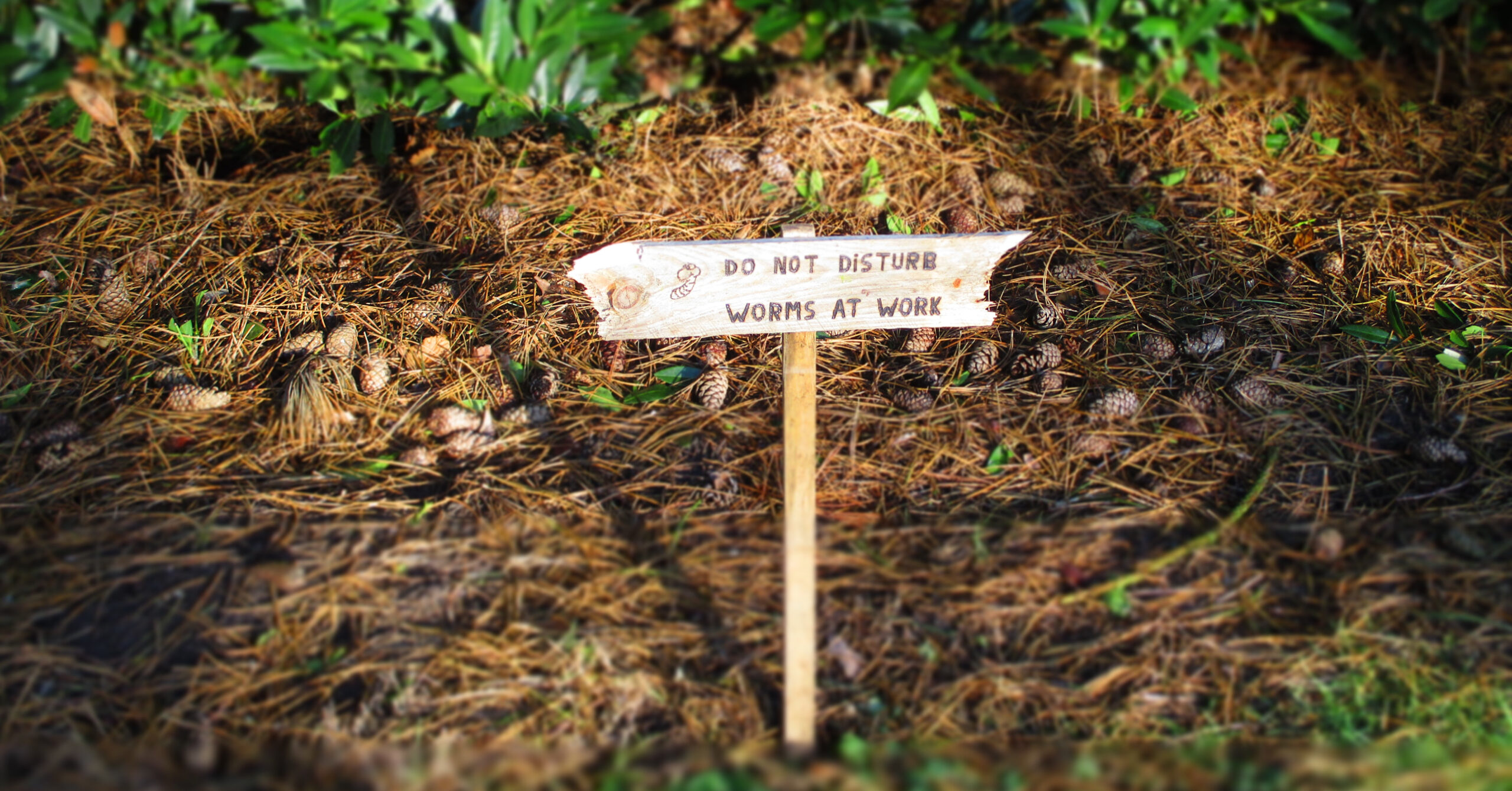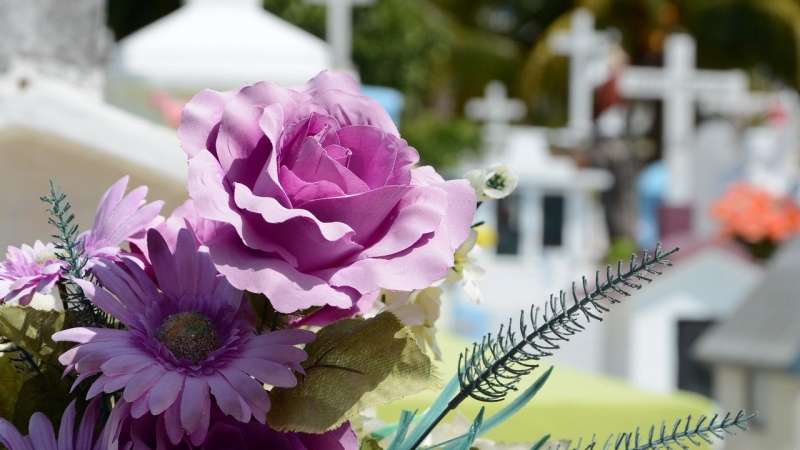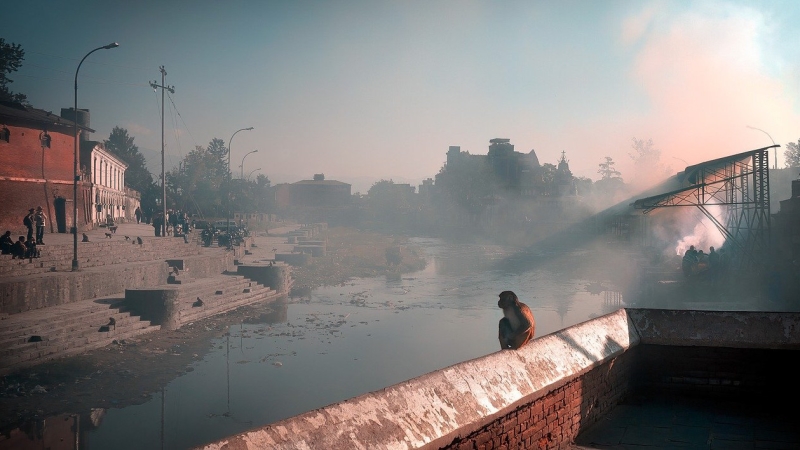Perhaps it is not a topic you care to think about too often. But someday you are going to have to face the music: your body will cease to exist in its current form. If you have lived a vegan life and want your funeral to not contain animal products, you need to know how to prepare for your vegan funeral. Many vegans are also aware and mindful of their impact on the environment. Have you thought about how much impact your funeral* is going to make? I have put some things down for you to consider when planning a vegan funeral. I have not only looked at the vegan aspect of death, but I also discuss some environmental aspects:
- Respecting your wishes as a vegan
- Which materials are vegan (and which are not)
- Environmental impact of different 'burial' methods
- Differences in funerary practices, depending on religion (or none)
- Your ultimate donation
* I use the word 'funeral' as a general reference to the practice of giving a deceased's body back to nature, in whatever form, independent of what it might be called within a particular culture or religion.
Respecting your vegan wishes
When it is time to consider how we want to leave this earth, as vegans, we even need to think about how we are going to do the least harm on our way out. Thus, it is probably best to discuss your wishes with your loved ones or to draw up a will. This way, the ones you leave behind will know how to best honor your wishes. It can be difficult to have to think about everything at the last moment and there are a few things to consider if you want your last goodbye to be vegan.
Vegan and non-vegan materials in funerals
In the average funeral, there are many different materials and objects involved, depending on your particular traditions and/or religion. Certainly not all of these are vegan, for your vegan funeral you have to be extra vigilant. Some are obviously not vegan, others are less so, some might even have a vegan certificate or label to make your choice easier.
Caskets
Caskets or coffins are typically made of wood. These are non-vegan if the manufacturer has used adhesives (glues) and finishes (paint or varnish). You should check before you order one, whether these are fully synthetic or otherwise vegan. You also need to look carefully at the lining of the casket. This is commonly made of silk, wool, or cotton.
The more elaborate and decorated the caskets, the higher the environmental impact, because of the amount of materials and energy needed for manufacturing. Keep it simple and clean to reduce your impact.
Instead of a traditional wooden or metal casket, you can opt for a cardboard or wicker one. They have a much lower environmental impact. You do have to check that the adhesives and finishes are vegan.
Candles
Candles are mostly made of paraffin, but to make them firmer stearic acid is added. This is commonly made from animal fat because it is cheaper. Vegan candles use coconut-based stearic acid. Unless candles come with a vegan certificate or label, it is impossible to tell which type of stearic acid has been used. Although vegan candles are usually more expensive than non-vegan candles.
Photo: Vlanka via Pixabay
Vegan Funeral Flowers
Cultivated flowers are vegan. Unfortunately, they can have a severe environmental impact. Not the growing itself causes harm, but the use of pesticides, fertilizers, and water all impact the environment in a negative way. If you do want flowers at your vegan funeral, choose a better alternative such as wildflowers, flowers from your own garden, or flowers with an ECO label. The more locally grown, the better for the environment.
Funerary monuments
If you choose to have a funerary monument, keep the following in mind:
- Monuments from natural and degradable materials have less impact on the environment;
- The larger the monument, the larger the environmental impact;
- The larger the distance between manufacturer and customer, the larger the environmental impact;
- For natural stone, assure yourself that it was not produced with child labor (which is common practice for stone originated in India);
- What happens with the monument if the grave is cleared, does it get a second life?;
- Finishes and paints can be non-vegan. They may contain animal derivatives.
Shrouds
Instead of a casket you can choose a shroud or traditional burial clothes. If you do, make sure they do not contain silk, leather, fur, or wool. Natural fibers, such as cotton are biodegradable.
Original cartoon by Bill Watterson -
I replaced the word 'seafood' with the more animal friendly 'tofu'. Fish are not food.
Environmental impact of different 'burial' methods
The environmental impact of a vegan funeral is a combination of the following aspects1:
- Manufacturing and transportation of burial materials (casket, shroud, etc.);
- Body treatment (embalming);
- Burial process (grave digging, cremation, resomation, etc.);
- Maintenance of burial site;
- Processing of rest materials;
- Transportation and logistics.
Dutch research institute TNO conducted research on the environmental impact of burial methods. Here is a link to the final report (in Dutch only, but you can ask Google to translate it).
Body Treatment
In some countries, such as the United States, it is common to embalm the dead. It is a method to dispose of bodily fluids and replace them with chemicals to preserve the body. Embalming fluid typically consists of formaldehyde and water and is carcinogenic and it is very bad for the environment and people who have to work with it.2
Burial (interment)
In general, burial (interment) has the biggest negative environmental impact of all burial methods. But things are not straightforward. It depends on a host of factors. For instance, if the burial happens with or without a casket, and what type of casket you use. A wooden casket is better for the environment than a metal casket, but less so than cardboard or using a simple cotton shroud.
Cremation
Strangely, wooden caskets are better for the environment than cardboard, bamboo, reed & wicker when they are burned, because they need less fuel. Cremation without a casket is LESS sustainable because you need more fuel for the burn process.
Traditionally, cremation furnaces are fueled by fossil fuels. However, electrical cremation furnaces have a much lower environmental impact. If cremation is a viable option for you, see if you can find a service that has an electrical furnace.
Alkaline Hydrolysis
Alkaline Hydrolysis has a lower environmental impact than burial or cremation because the process requires only 25% of the energy needed for a fossil flame cremation3.
Resomation explained
Alkaline hydrolysis (resomation, aquamation, biocremation or water cremation) is a sustainable way to return the body to nature. During the process, the body is resolved in water by way of high pressure and temperature in a stainless steel unit. The end result is a watery substance which is drained away. Clean bones remains. These can be ground to fine powder and placed in an urn. The whole process takes about 4 to 6 hours. It is currently the most environmentally friendly way to return your body to nature.
It is a fairly new method and is not yet allowed everywhere. Check with your locals authorities to find if this is an option where you live.
Spreading ashes
It might come as a surprise but even spreading your ashes has a negative impact on the environment. The ashes contain phosphates and calcium and can be disastrous for nature.4 Spreading your ashes at sea is better unless you are using a polluting boat or airplane. A good alternative is a 'rain-urn'. This is a bronze urn that allows rainwater to slowly seep through so the ashes mix with the earth in about 10 years. They are not cheap, but perhaps you have a creative friend who can help you make one. Have a look at some examples of rain-urns.
There are a lot of different options for storing and spreading ashes. Of course, here you also have to make sure the urns are vegan. You can also make your own urn from recycled materials.
Differences in funerary practices, depending on religion (or none)
I have based this article on common practices used in Christian funerals as these are the only ones I have ever attended. I have tried to incorporate aspects of other (major) religions and belief systems to make the article inclusive. Please forgive me if I have forgotten something or have made wrong interpretations or assumptions.
Christianity
Burials are the traditional way of interment for Christians, but cremations have become more accepted. However, in more conservative Christian communities burial is still the norm. Although the Roman Catholic Church lifted the ban on cremation in the 1960s, most Catholics still prefer a traditional burial. Eastern Orthodox churches forbid cremations, but Protestant Churches have accepted them.
Judaism
Jews dress the body of their deceased in traditional clothing, usually made from linen. (Be sure it does not contain silk or wool). The dead are buried with or without a casket, depending on local customs. Caskets are commonly very simple and made with unfinished wood, in order not to slow down the return of the body to dust.
Islam
According to their practices, deceased Muslims should be buried as soon as possible, preferably within 24 hours. Cremations are strictly forbidden. The dead are typically wrapped in a type of shroud. They can either be buried with or without a casket. The type of grave depends on local customs.
Hinduism
In Hinduism, the dead are usually cremated. This can be done on a traditional wood pyre or in a furnace. The deceased is put in a casket or a shroud. After cremation, the ashes are most commonly scattered into a body of water.
Buddhism
Buddhists have different methods, depending on their geographical location and local traditions. Generally, they put the dead in a casket and cremate them. Ashes may be collected later and kept in an urn. According to Buddhist custom, some bodies are exposed in an open area, or buried in a cave or forest.
Atheism and agnosticism
If your burial is not dictated by religious or cultural practices, you can do what feels right for you. As a vegan and atheist I would say, make it as simple and environmentally friendly as possible.
Photo: 8moments via Pixabay
Serving food at your vegan funeral
You will not be there to enjoy it, and you might be the only vegan in your family; you still need to make sure the food at your vegan funeral service is vegan. It is a great opportunity to give non-vegans the chance to taste delicious vegan food. I am sure they will thank you and remember you for it. The perfect way to plant seeds even when you are no longer here. 😉
Your ultimate donation
The fact that life has left your body does not mean you cannot make some final contributions. There are a few ways to make your ultimate donations.
Donate your organs
Depending on your physical condition at the time of death you could decide to donate (some of) your organs. This way you can help other people who desperately need an organ to survive or for a better quality of life. Of course, you need to consider this before you die. You need to register it in a way that is customary in your country.
Donate your body to science
If you are really ambitious you can also donate your entire body to science. This will aid medical science by allowing them to use your body for medical practices. If you like the idea of being helpful after death, this might be a good option for you. Another added benefit is that it is usually free, so it will save you on funeral costs, so you can perhaps donate more to a good cause.
Donate (part of) your money
As a final gesture, you can donate (part of) your money or other assets to a good cause. Maybe the animal sanctuary around the corner or some other (local) initiative or NGO you feel good about donating to.
Rest (and live) in peace
Hopefully, you live a full and long life on this earth and you won't be making funeral arrangements anytime soon. However, time might go faster than you anticipated and it is good to plan these things ahead. Or at least discuss them with your loved ones. I hope this blog has helped you think about the ways you can exit this world in a vegan (and environmentally) friendly way. You may not get to choose your final moments on earth, but at least you can plan ahead for your vegan funeral.
Resources
- Keijzer, E.E. & Kok, H.J.G., Milieueffecten van verschillende uitvaarttechnieken - TNO (in Dutch only)
- Embalming - A Greener Funeral
- Alkaline Hydrolysis - Wikipedia
- Alterra Wageningen (in Dutch only)





